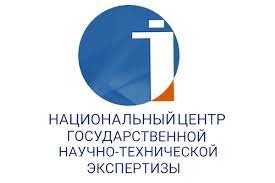THE ETHNOCULTURAL AND LINGUISTIC PARADIGM IN THE TURKIC WRITTEN MONUMENTS OF THE MIDDLE AGES
https://doi.org/10.55491/2411-6076-2024-3-40-50
Abstract
This article examines the language of written monuments of medieval Turkic literature in the context of culture. The study was conducted on the material of two major ethnographic and literary monuments of the Karakhanid era – the dictionary “Divani Lugat at-Turk” by M. Kashkari and the poem “Kutadgu Bilik” by Zh.Balasagun. When studying medieval Turkic written monuments, we relied on an anthropocentric paradigm, that is, we consider the language of monuments as an integral part of culture. Special attention is paid to the study of the nature of proverbs and sayings in Turkic monuments, their similarities with proverbs and sayings in the Kazakh language, i.e. their paradigmatic connections. Cultural and linguistic information was emphasized in the monuments that characterize the ethnic culture and worldview of the Turks. Analyzing the ethnocultural vocabulary in two medieval monuments, it was found out that the Turkic peoples were engaged in agriculture and animal husbandry in the Middle Ages. The general similarities of the lifestyle and worldview of the ancient Turkic peoples with modern Turkic peoples, including the Kazakh people, are emphasized. The article proposes a thematic classification of ethnographic vocabulary recorded in two written monuments. As the analysis showed, M.Kashkari’s dictionary contains ethnocultural vocabulary that provides valuable information about the life and culture of the Turkic peoples. We determined the correspondence of the lexical and poetic means of the poem “Kutadgu bilik” with Kazakh poetry.
Keywords
About the Authors
K. AbdrakhmanovaKazakhstan
Kulsin Abdrakhmanova - Candidate of Philological Sciences, Docent
Almaty
N. Konkabayeva
Kazakhstan
Nazim Konkabayeva - Doctor of Philosophy (PhD)
Almaty
Zh. Abdullayeva
Kazakhstan
Zhibek Abdullayeva
Almaty
References
1. Adebi zhadіgerler (2007) Zhiyrma tomdyq. 5-t.: Zhүsіp Balasagun. Qutty bіlіk /Kone tүrkі tіlіnen audaryp, algy sozі men tusіnіkterіn zhazgan A.Q. Egeubaev. Almaty: “Tajmas” baspa uji, 2007. 536 b. [Literary relics. (2007) Twenty volumes. No. 5: Yusup Balasagun. Blessed knowledge. A.K. Egeubaev wrote a preface and comments translated from the ancient Turkic language. Almaty: Publishing house “Taimas”, 536 p.] (in Kazakh)
2. Ajdarov, G., Quryszhanov, A., Tomanov, M. (1971) Kone turkі zhazba eskertkіshterіnіng tіlі. Almaty: Mektep. [Aidarov, G., Kuryshzhanov, A., Tomanov, M. (1971) The language of ancient Turkic written monuments. Almaty: School.] (in Kazakh)
3. Balasaguni, J. (2015) Qutadgu bіlіk: Qut akeletіn bіlіm / Audargan A.Egeubaev. Astana: “Gylym” baspasy, 576 b. [Balasagunı I. (2015) Blessed knowledge. Translated by Egeubaev А. Astana: Science, 576 p.] (in Kazakh)
4. Gumbol'dt, V. (1985) Jazyk i filosofija kul'tury. Moskva: Progress, 425 s. [Humboldt, V. (1985) Language and philosophy of culture. Moscow: Progress, 425 p.] (in Russian)
5. Gumiljov L.N. (1967) Drevnie tjurki. Moskva: Nauka, 504 s. [Gumilev, L.N. (1967) The ancient turks. – Moscow: Science, 504 p.] (in Russian)
6. Egeubaev, A. (1989) Idejno-hudozhestvennoe vlijanie pojemy “Kutadgu Bilig” Jusufa Balasagunskogo na razvitie kazahskoj literatury: 10.01.03. Kaz. ped. ins-t im. Abaja. Alma-Ata. [Egeubayev A. (1989) The ideological and artistic influence of the poem “Kutadgu Bilig” by Yusuf Balasagunsky on the development of Kazakh literature: 10.01.03. Kazakh Pedagogical Institute named after Abay. Almaty.] (in Russian)
7. Karahan, A. Uluslararası Türk Dili ve Edebiyatı öğrenci Kongresi TUDOK (2008). İstanbul Kültür üniversitesi AtaköY. İstanbul Bildiriler, İstanbul, S. 51-62. (in Turkish)
8. Kononov, A.N. (1973) Izuchenie “Divan lugat at-turk” Mahmuda Kashgarskogo v SSSR. Sovetskaja tjurkologija, №1. S. 3-9. [Kononov, A.N. (1973) The study of the “Divan lugat at-turk” by Mahmud Kashgarsky in the USSR. Soviet Turkology. №1. P. 3-9.] (in Russian)
9. Qashqari, M. (1997) “Turіk tіlіnіng sozdіgі”: (Diuani lugat it-turіk): 3 tomdyq shygarmalar zhinagy. Qazaq tіlіne audargan, algy sozі men gylymi tusіnіkterіn zhazgan A.Egeubaev. Almaty: Hant baspasy, 1-tom, 590 b. [Qashqarı, M. (1997) “Dictionary of the Turkic language”: (Dıvanı luǵat at-túrіk): collection of works in three volumes. Translated by Egeubaev A. Almaty: Hant, Volume 1, 590 p].
10. Quryshzhanov, Ә. (1986) “Eskі turkі zhazba eskertkіshterі (XI-XV gg.)” kursynyng bagdarlamasy. Qaragandy: KarGU. [Kuryshzhanov, A. (1986) Course program “Ancient Turkish written monuments (XI-XV centuries)”. Karaganda: KarSU.] (in Kazakh)
11. Tomsen, V. (1924) Drevnie pis'mena iz Mongolii. Lejpcig, 25 s. [Tomsen, V. (1924) Ancient writings from Mongolia. Leipzig, 25 p.] (in Russian)
Review
For citations:
Abdrakhmanova K., Konkabayeva N., Abdullayeva Zh. THE ETHNOCULTURAL AND LINGUISTIC PARADIGM IN THE TURKIC WRITTEN MONUMENTS OF THE MIDDLE AGES. Tiltanym. 2024;(3):40-50. (In Kazakh) https://doi.org/10.55491/2411-6076-2024-3-40-50

















